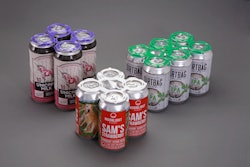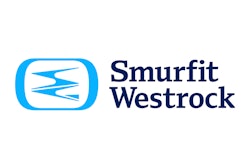Quick hits:
- Filling, seaming, capping, labeling machinery that’s designed for high changeover, low volume batch runs, and frequent washdown, is right on target for craft brewers.
- With short runs of small batch beers, printed cans can be out of reach for craft brewers. So, they decorate them themselves using labels and labeling equipment, shrink sleeves with shrink tunnels, or increasingly, direct-to-shape digital printer suppliers.
- The craft brew market—both the breweries themselves and their loyal consumers—is maturing. Meanwhile, new category challengers like seltzer, wine in a can, and ready-to-drink canned cocktails, are showing up on beer’s traditional turf.
- How breweries deal with innovation will define craft brew’s next chapter. Will they embrace new category challengers, or double down on innovating beer? If there’s a mixed reaction, it’ll be interesting to see how cohesive the industry remains.
- Live at the Craft Brew Conference: Is the Pint Glass Half Full or Half Empty?
- Direct-to Shape Digital Printing on Cans Hits its Stride
- Generational Shifts: The Millennial Mindset on Money, Career, Communication, and Benefits
 | Read the transcript below: |
Hello, I’m Matt Reynolds, back with another edition of Take Five.
I spent the day yesterday walking the halls of the Craft Brew Conference in Minneapolis. This is always an exciting market to cover from through the lens of packaging, and as usual, there was a whole lot going on from a trends perspective.
One all new debut that I saw on the floor was Pneumatic Scale Angelus’ CB100C. Typically for canning at low to medium speeds and volumes, in-line fillers do the job just fine. But this 100 can/minute entry uses a 12-head rotary-style filling turret instead of inline, which makes for less product agitation. There of course are slower in-line machines, and rotary machines faster than any craft brewer would need on either side of the continuum. But this machine occupies a specific niche—a rotary filler targeting that 100 cans a minute range—and that’s about at the center of the craft brew bullseye.
Almost synonymous with craft brew are the high end, robust, and often brightly colored HDPE or LDPE can handles or can carriers. Practically every brewery uses them in one format or another, as 6 pack holders or maybe 4-pack holders for 16-oz cans. The usual suspects of Pack Tech and Roberts PolyPro were at the show, and I noticed that just because they’re staples in this corner of the beer industry, doesn’t mean they’re not innovating. New formats are lightweighting to use less total plastic, or they’re going in the opposite direction for more branding opportunity for the beer. And they’re also creating newer, more ergonomic designs that are easier for consumers to carry, or perhaps more firmly grip cans. And with new formats come new application equipment, and those can range from completely manual to sophisticated, fast machinery.
Can handles are also evolving in terms of materials. We’ve seen a lot of movement on the paperboard side of the equation as an outgrowth of consumers’ perceptions of plastic, and I saw a lot of examples yesterday from the likes of Graphic Packaging, WestRock, and Atlantic Packaging’s Fishbone, among others. These tend to use virgin paperboard, rather than recycled, since their longer strands are more robust to handle the liquid weight of beer. This paperboard also feature mineral or other coatings to mitigate moisture pickup. And like the plastic can handle counterparts, they range from minimalistic to robust with lots of billboard space. Also like the plastic can handle counterparts, a range of application capabilities, from manual to fully automated, underpin the growth of this area.
And with volumes frequently not high enough to merit minimum order quantities for printed cans, a lot of breweries buy brightstock cans and decorate them themselves. I spoke to the folks at Weber Packaging about some interesting labels with matte and gloss coatings, even some with tactile elements. My pal Bob Williams gave me a tip on an upcoming me an Axon machine with what could controversially be called steam-less tunnel, where the shrink sleeved cans are dry to the touch coming out of the tunnel. I saw TriPack had drawn quite a crowd, too.
In terms of can decoration, we’ve seen a lot of growth in direct-to-shape digital printing. machine manufactures Velox, Hinterkopf, and Tonejet were all at the show, as were their customers, can decorators like Hart Print and Solucan. A few years ago, this tech might not have been considered ready for prime time, but it seems the time of direct-to-shape digital can printing has arrived, or at least is quickly approaching.
Craft brew relies on packaged products sold in bottles or, increasingly cans, but also on in person, on premise places like tap rooms, brew pubs, or distributed drafts or kegs for restaurants. Naturally the pandemic was hard on this subcategory. The good news, according to Bart Watson, the Brewery Association’s Economist, was there was strong bounce back of 8% growth in 2021 over 2020, though not quite back to 2019 levels.
Beyond the more immediate, acutely felt disruptions around supply chain and logistics, Watson described the craft brew landscape as a maturing market, both in its breweries and its consumers. It’s still growing, but the pace of chance is slowing. There aren’t many breweries closing, and the number of openings each year far outweighs he closures, but it’s
Traditionally, beverage alcohol is a three-legged stool of beer, wine, and spirits. But a fourth category, a challenger segment, has entered the market—seltzers and Ready-to-drink cocktails. These look like beer to consumers, since they tend to be in cans, they’re about the same ABV, and the price point is similar. Because they look like beer, they’re eating into craft beer’s market share. They’re new and exciting, so more people from younger generations like millennials and GenZ have started to include these in their beverage mix.
This brings up an existential question for craft breweries. They often have at least some of the equipment and a lot of the expertise needed to expand into the fourth category of seltzers and RTDs themselves. Or, they could double down, and continue to innovate in the segment they’ve already mastered. Watson referenced the growth of IPAs from the bitterness and IBU wars of the previous decade, and the evolution into the hazy, juicy, fruity IPAs of today. Both are viable paths, and they’re not mutually exclusive. He asked this question to his audience of brewers at the Conference: With all of these changes, what does craft brew want to be?
That’s all the time we have for Take Five.
































